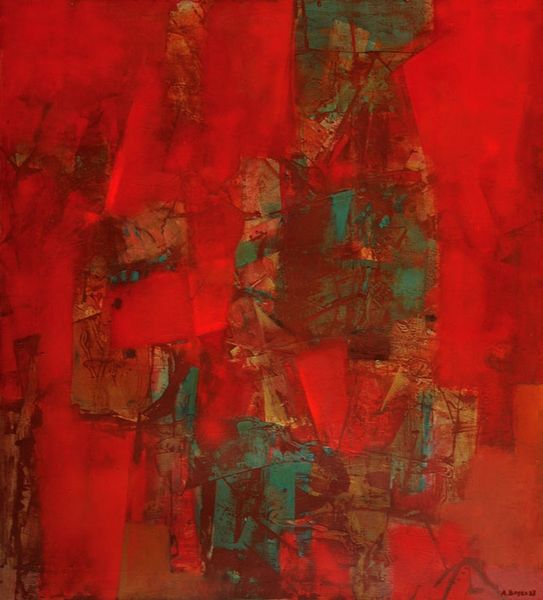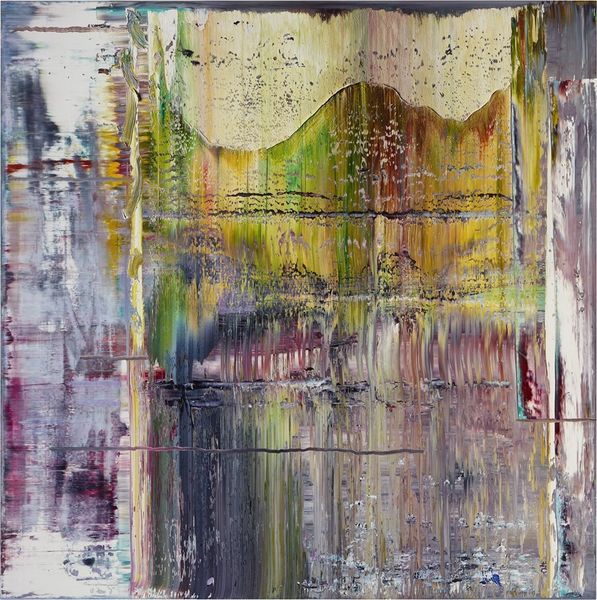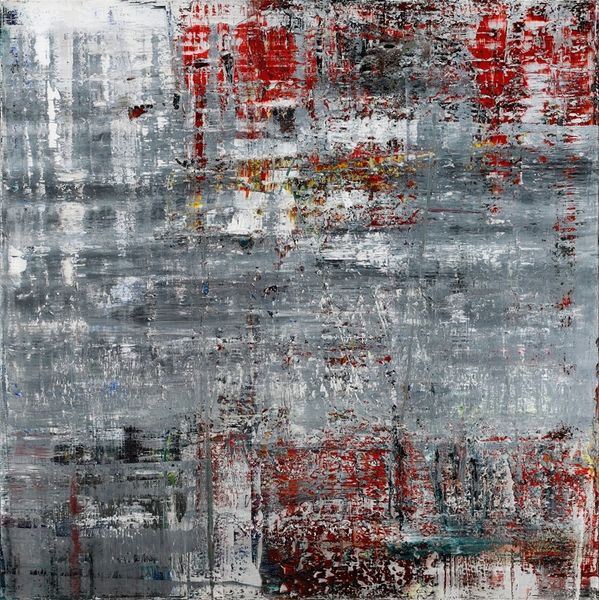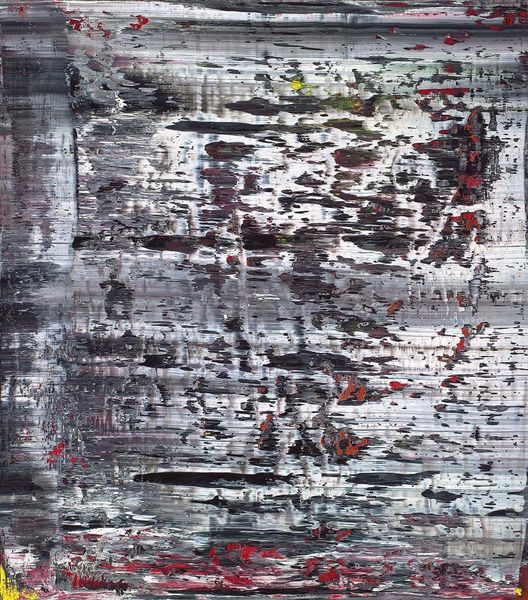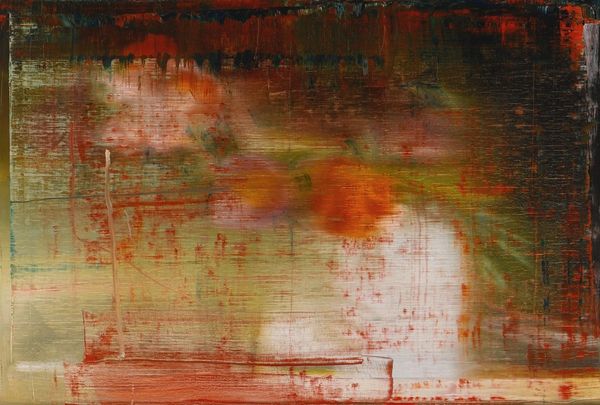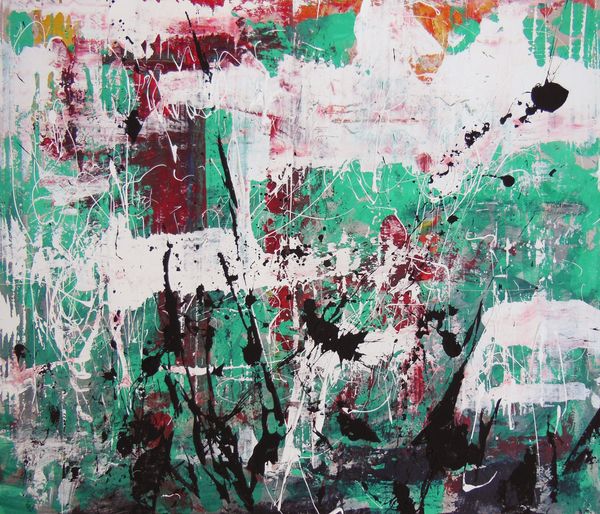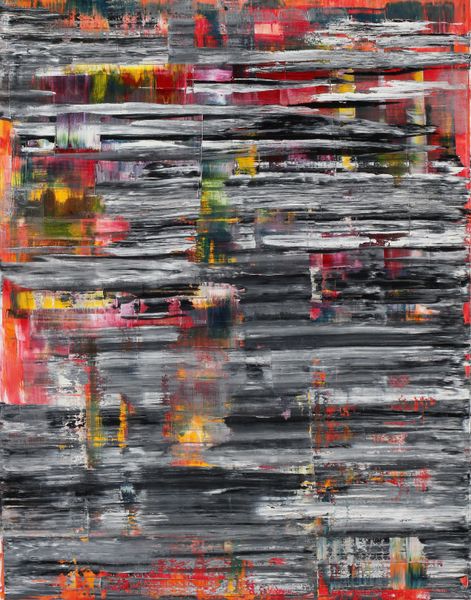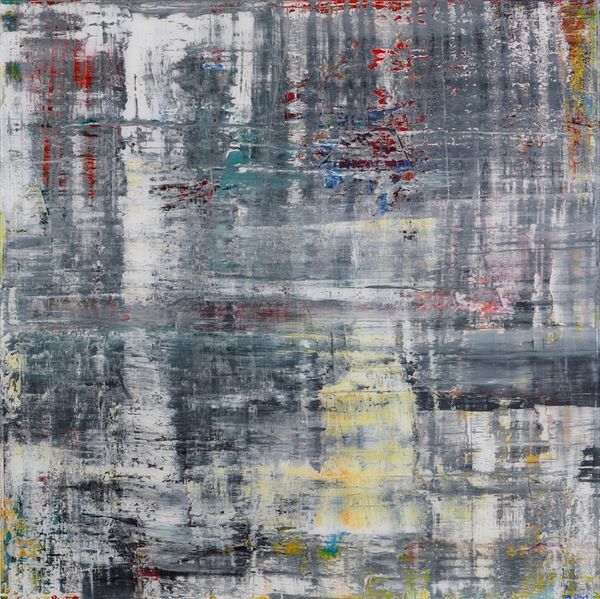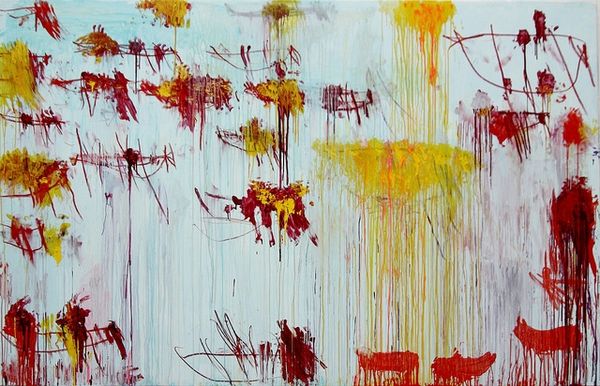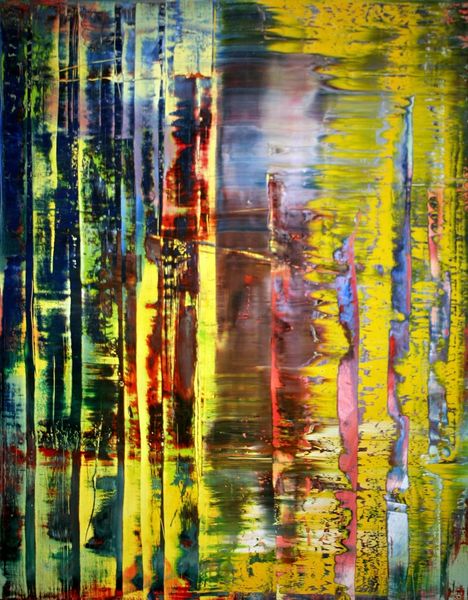
#
capitalist-realism
Copyright: Modern Artists: Artvee
Curator: Gerhard Richter's "Karmin," painted in 1994, immediately strikes one as an exercise in color and texture. What are your initial thoughts? Editor: My immediate reaction is that it is like looking through rain streaked glass, dominated by that overwhelming red haze and soft diffused light. Curator: Precisely. Richter achieves this effect through layers of acrylic paint, dragged and scraped across the canvas. His process, rooted in experimentation, intentionally exposes these layers, blurring the distinction between creation and destruction. You can see the mark of the squeegee, for example. It reminds us that painting isn’t just about expressing some internal state but a very tangible act of labor and a product. Editor: And consider the effect! The composition becomes not just about applying pigment, but also about its removal and the ghosting, ephemeral quality this produces. The subtle variations of red are so central: their tonality and weight guide the eye despite the overt mark making and textured materiality. It really calls attention to painting as pure visual sensation. Curator: He wasn’t alone either, this period saw a burgeoning of interest in materiality. We must remember the socio-economic conditions. The art world at the time was becoming highly commodified and spectacularised so this interest can be read in part as a push-back, bringing art back down to earth. Back to basic materials. Back to its roots in labour. Editor: I find this piece less aggressive. While materiality is certainly at the forefront, to suggest this approach solely acts as political rebellion sells the nuance of Richter’s work short. Ultimately, Richter provokes visual perception: it offers something deeply sensory which evades easy interpretation. Curator: That may be true, however for me this speaks to something about the wider role of artists in culture. They often act like barometers to the storm clouds of society, expressing the hopes and frustrations that others either can't or won't express. Editor: I see your point, still I believe in this work the core idea really rests within pure optical and phenomenological experience that is independent of external social factors.
Comments
No comments
Be the first to comment and join the conversation on the ultimate creative platform.
